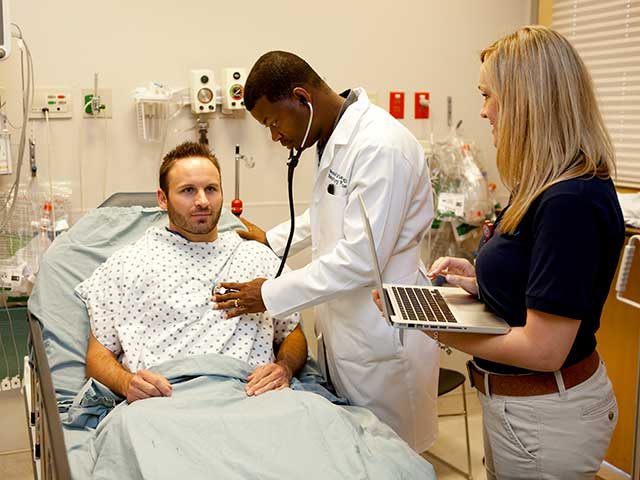Hospitalist Scribes
Delivering quality patient care keeps hospitalists on the go. That's why providers rely on the hospitalist scribe program to earn the rewards and benefits of ancillary support.
Connect with UsThink what Hospitalists unburdened by data entry can accomplish.
With ScribeAmerica, you have a critical new resource for OPTIMIZING EHR use and workflow for the inpatient setting. After connecting with your care team, we pinpoint where you’re falling short and how we can benefit you the most. What are the specific characteristics of your workplace? How can we help you care for the unique population you serve? Maybe you need twenty-four hour coverage or scribes to overlap with your physicians’ schedules. We cover holidays. And if you have a new EHR, count on us for hires with the appropriate documentation expertise.
Our EHR scribe training program educates specialists. Hospitalist scribes develop skills that differ from their MEDICAL SCRIBE COUNTERPARTS. With training to review relevant history, lab tests, and prep charts, hospitalist scribes ensure the providers are ready to see patients. You can rely on our experienced project leaders to hire the most qualified local personnel. That’s another benefit of our proprietary national recruitment process. With medical scribes assisting the care team, you will meet daily demands, and increase patient census without adding an additional provider.
How it Works
Hospitalist scribes provide additional non-clerical tasks beyond documentation.
As hospitalists communicate with patients, our scribe support model alleviates the burden of non-essential tasks, allowing providers to focus on rounding and coordinating care plans with nursing staff.
- Reduce provider clerical burden
- Improve ICD-10 documentation
- Support fluctuating patient volumes

We provide training no matter what EMR platform you use.
- Reduce provider clerical burden
- Improve ICD-10 documentation
- Support fluctuating patient volumes

Our leadership team provides continuous support and feedback.
- Ensure coverage for shift changes
- Expand program to meet time-saving goals

The Advanced Scribe Training Program
Approximately 120 hours per scribe

Case Studies
Provide Quality Care with Medical Scribes.





